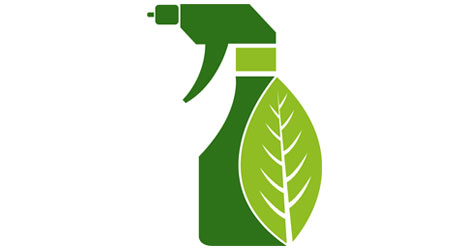Moving Beyond The Basics To Green Cleaning Innovations
Part 2 of a 2-part article explaining how to get started with a green cleaning program.
For a building that has made a strong commitment to green cleaning and has done the basics, there are plenty of opportunities to innovate and continue to drive reductions in impacts to both human health and the environment.
A well-established program often has the following attributes that serve as next steps for basic programs:
• There is an expressed commitment from the organization that green cleaning is a priority issue and a green cleaning policy is in place.
• A “road map” will be used to help identify all of the products and other issues associated with a well-established program. These road maps are often segment-specific.
• The vast majority of cleaning chemicals, especially those used daily and in larger volume — including those to clean floors and other surfaces, glass and mirrors, washrooms and carpets — are all concentrated and dispensed using some type of portion control.
• The vast majority of products will be certified to independent third-party standards such as those from U.S. Environmental Protection Agency’s Safer Choice (formerly Design for the Environment Program), Green Seal, or Underwriter’s Labs/EcoLogo.
• Equipment and miscellaneous tools have been considered for opportunities to reduce environmental impacts, as well as for ergonomic and other issues that can affect the health of cleaning personnel. These include vacuum cleaners and carpet extractors that are certified by the Carpet & Rug Institute, and other tools such as buckets, carts, mops, etc., that are durable and made from recycled materials.
Finally, what truly differentiates a basic program from a well-developed one is the training of cleaning personnel. Basic training of workers is required by law, especially as it applies to use of hazardous products. But a well-developed program goes beyond this to make sure workers understand why cleaning is important (i.e., to protect occupant health) and why green cleaning is important (i.e., to reduce impacts on the environment), and that they are engaged in creating a healthy, high-performance building.
Always Room To Improve
The green cleaning journey has progressed enormously over the past 25 years. Perhaps the most exciting aspects are yet to be introduced as manufacturers of cleaning products increase their investment in green technologies, and as we move beyond the products themselves in an effort to create the healthiest buildings possible, with the lowest environmental impacts and cost.
The following are some of the issues that can be considered, especially for the leaders and pioneers.
• Just as with independent third-party certification of cleaning products and equipment, the leaders will consider the same type of independent review for the program itself. This will ensure that workers are properly trained, and that processes in addition to the products are done correctly and consistently. Both ISSA (International Sanitary Supply Association) and Green Seal offer such programs.
• Cleaning performance is often based on subjective measurements. Unfortunately, simply looking or smelling clean should not be the standard. That’s because it is the things we can’t see that can make occupants sick (i.e., bacteria and viruses). Thus the leaders will adopt new test equipment such as ATP meters to quantitatively determine if surfaces are clean.
• Disinfectants are selected from EPA’s Green Disinfectant program, which is specifically designed to help purchasers identify disinfectant active ingredients that reduce risks to human health and the environment.
• The adoption of new technologies will become a hallmark of leadership. For example, the development of devices that produce cleaning chemicals on-site will result in enormous environmental benefits by reducing impacts from the extraction of raw materials for ingredients and packaging materials. Other chemicals will rely more on probiotic bacteria and enzymes to clean the way nature does. And equipment will become more intelligent relative to its performance and maintenance, produce its own cleaning chemicals, be energy- and water-efficient, and in many cases will be operated remotely (i.e., by robots).
Regardless of where a building is on the green cleaning journey, there are numerous opportunities for improvement. n
Stephen Ashkin is president of The Ashkin Group, an international consulting firm working to green the cleaning industry. He can be reached at SteveAshkin@AshkinGroup.com.
Email comments and questions to edward.sullivan@tradepress.com.
-----
Additional Resources
Consider these sources for help with green cleaning:
1. USGBC’s LEED: Building Operations and Maintenance
2. The International Facility Management Association Foundation’s The Business of Green Cleaning
3. The Healthy Schools Campaign’s Quick & Easy Guide to Green
Cleaning in Schools
4. Green Sports Alliance’s Playbook on Greener Cleaning in Sport Facilities
5. Practice Greenhealth’s Green Cleaning in Healthcare
Related Topics:













